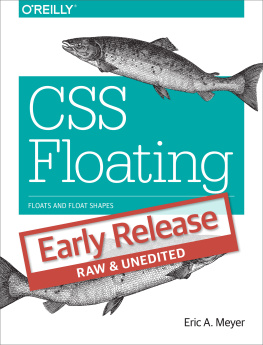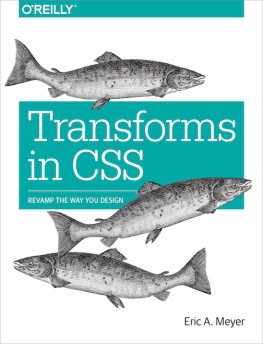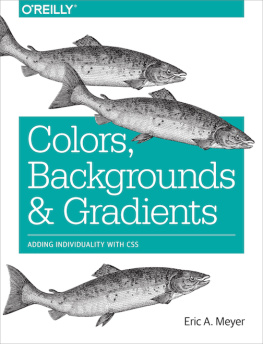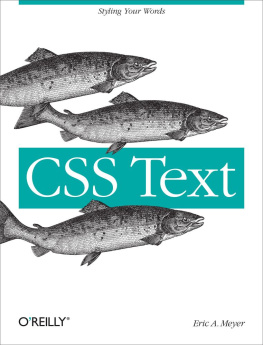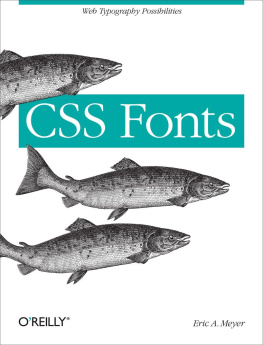Meyer Eric A. - Positioning in CSS: Layout Enhancements for the Web
Here you can read online Meyer Eric A. - Positioning in CSS: Layout Enhancements for the Web full text of the book (entire story) in english for free. Download pdf and epub, get meaning, cover and reviews about this ebook. genre: Computer. Description of the work, (preface) as well as reviews are available. Best literature library LitArk.com created for fans of good reading and offers a wide selection of genres:
Romance novel
Science fiction
Adventure
Detective
Science
History
Home and family
Prose
Art
Politics
Computer
Non-fiction
Religion
Business
Children
Humor
Choose a favorite category and find really read worthwhile books. Enjoy immersion in the world of imagination, feel the emotions of the characters or learn something new for yourself, make an fascinating discovery.
- Book:Positioning in CSS: Layout Enhancements for the Web
- Author:
- Genre:
- Rating:3 / 5
- Favourites:Add to favourites
- Your mark:
Positioning in CSS: Layout Enhancements for the Web: summary, description and annotation
We offer to read an annotation, description, summary or preface (depends on what the author of the book "Positioning in CSS: Layout Enhancements for the Web" wrote himself). If you haven't found the necessary information about the book — write in the comments, we will try to find it.
The Grid Layout spec will soon change your approach to website design, but there will still be plenty of uses for CSS positioning tricks. Whether you want to create sidebars that remain in the viewport (browser window), add sticky section headings to lists or long articles, or overlap one element with another, this concise ebook will expertly guide you through all the main CSS positioning types.Short and deep, this book is an excerpt from the upcoming fourth edition of CSS: The Definitive Guide. When you purchase either the print or the ebook edition of Positioning in CSS, youll receive a discount on the entire Definitive Guide once its released. Why wait? Make your web pages come alive today.Youll learn how to:
Remove an element from a document but keep its new position part of the documents flow with absolute positioning;
Keep an element like a masthead or sidebar in one fixed position in the viewport with fixed positioning;
Preserve an elements shape and the space it occupied in the document with relative positioning;
Make a documents headers selectively stay still in response to scrolling conditions with sticky positioning;Eric A. Meyer is an author, speaker, blogger, sometime teacher, and co-founder of An Event Apart. Hes a two-decade veteran of the Web and web standards, a past member of the W3Cs Cascading Style Sheets Working Group, and the author of OReillys CSS: The Definitive Guide.
Meyer Eric A.: author's other books
Who wrote Positioning in CSS: Layout Enhancements for the Web? Find out the surname, the name of the author of the book and a list of all author's works by series.

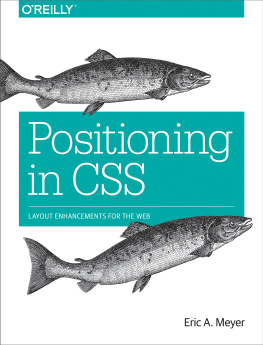

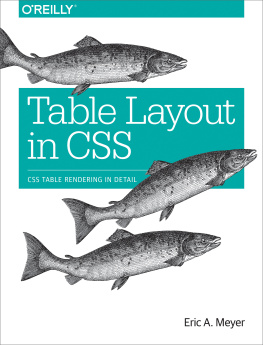
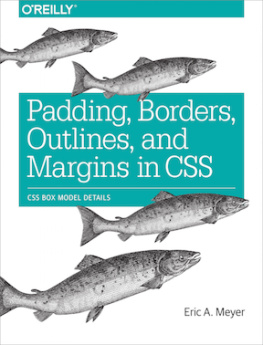
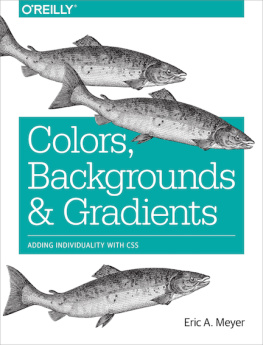
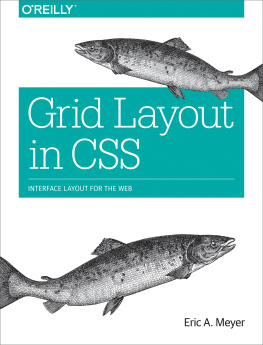
![Eric A. Meyer [Eric A. Meyer] - Padding, Borders, Outlines, and Margins in CSS: CSS Box Model Details](/uploads/posts/book/119142/thumbs/eric-a-meyer-eric-a-meyer-padding-borders.jpg)

